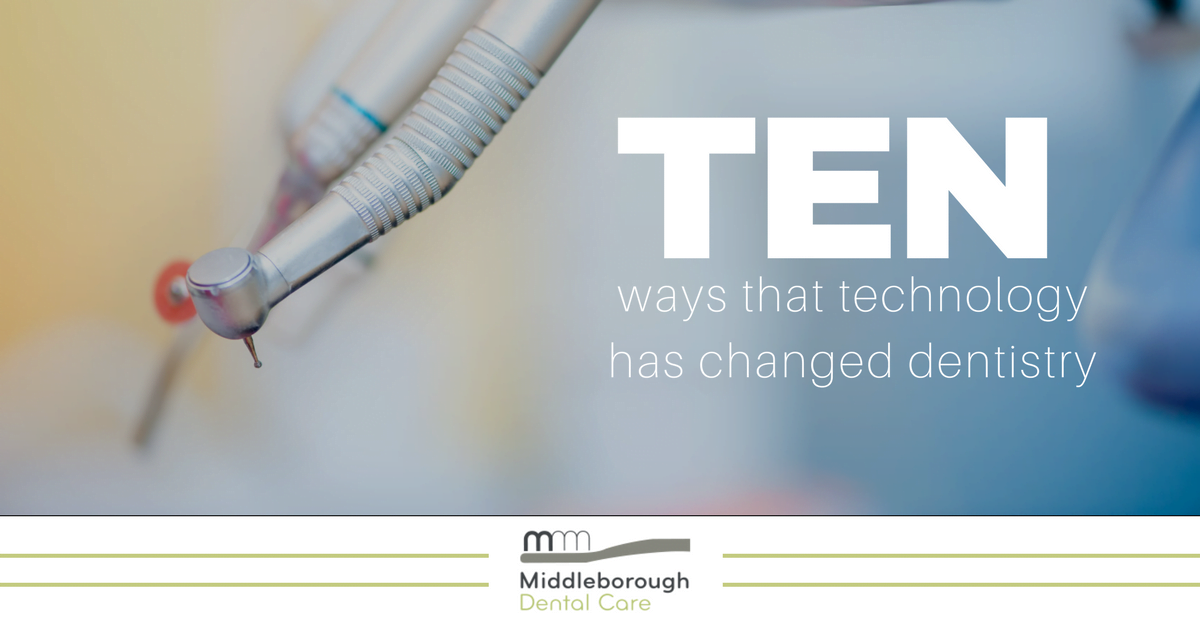
10 ways that technology has changed dentistry
Not so long ago, a visit to the dentist took longer, because it was harder for the dentist to do a thorough examination of all your teeth and gums.
If you needed any work done, that took longer too. Sometimes it took multiple visits to do what can now be easily done in one.
There were also fewer options for straightening, repairing, or replacing teeth.
Technology has changed dentistry as rapidly and significantly as any other field and a big part of our work at Middleborough Dental Care is keeping up with the latest innovations.
Our top 10 major advancements
The filling material that dentists use to fill a cavity used to be a silver-coloured amalgam. These days, we have the options of more tooth-coloured composites and porcelain fillings, which look more natural.
If you’ve chipped a tooth, it can be restored to look more natural than it would have in the past. Filling material is longer lasting thanks to improvements in bonding material.
We wrote about nitrous oxide in a previous blog post. This method of calming a patient so that he or she is relaxed, but still able to interact with the dentist during treatment, has made a big difference to many people.
Invisalign is a big improvement on the “traditional” heavier metal braces. These clear, practically invisible braces gently straighten teeth, are more comfortable, easier to take out for cleaning, and don’t need the wearer to restrict the foods they eat.
The technology behind the manufacture and implementation of dental implants has also come a long way over the past decade or so. With better materials, better designs, and improved techniques for both the implant surgery and the fitting of crowns, results are generally outstanding. You can read more in our blog post Why quotes for dental implant surgery vary greatly.
New materials have made it possible to create even thinner veneers that are just as strong, which means more of the natural tooth can be retained when preparing it to have a veneer attached.
Besides the benefit of reducing exposure to radiation, digital radiographs (x-rays) allow images to be instantly displayed on a computer screen. It’s also a more comfortable procedure and allows dentists to find problems with the teeth, mouth, and jaw for on-the-spot treatment.
The next step up is cone-beam imaging, which is similar to getting a dental CT scan. The x-ray machine goes around the patient’s head to capture a 3D view, which can help identify features not seen on a traditional x-ray, and allow dentists to better plan for the procedure.
Computer-assisted design/computer-assisted manufacture or CAD/CAM technology has made it easier and much faster to measure for and create things like crowns and bridges, meaning fewer visits to the dentist as well as more accurate fittings.
Intraoral cameras are small cameras that are put into a patient’s mouth. By providing clear images, they help in the detection and prevention of oral health problems, as well as improving patient communication and education.
What does the future hold?
We’re only guessing, of course, but we wouldn’t be surprised if you soon have an intelligent toothbrush that connects to an app on your smartphone to diagnose any issues with your teeth or gums.
These scanned images could be uploaded directly to the Cloud and, once you had provided access to them, we’d know what work you needed done before you even walked through the door!
Then, using laser technology, we’d fix any issues painlessly, without the need for nitrous oxide or anaesthetics. Root canal fillings and crowns would be created on the spot using our 3D printer, fillings will be made of a biologically active material made from stem cells …
Whatever the future holds, you can be sure it will be less time in the dentist’s chair and better outcomes for patients.
We can’t wait!
But you shouldn’t wait until then, either.
Give us a call today and make a booking.